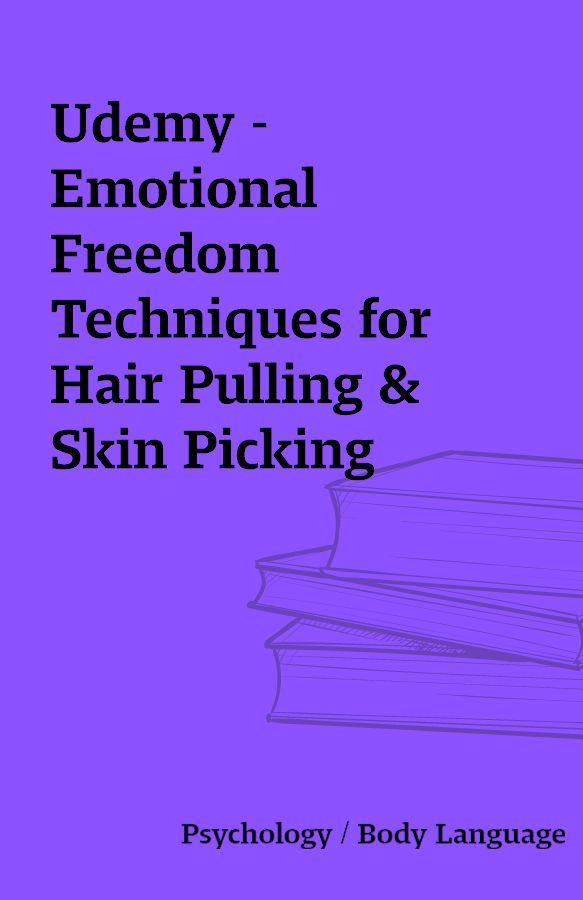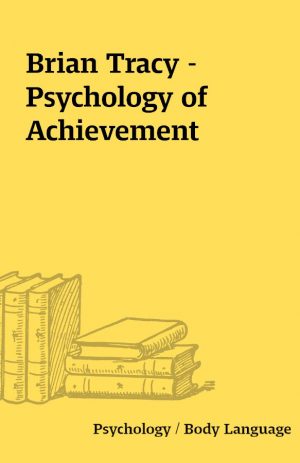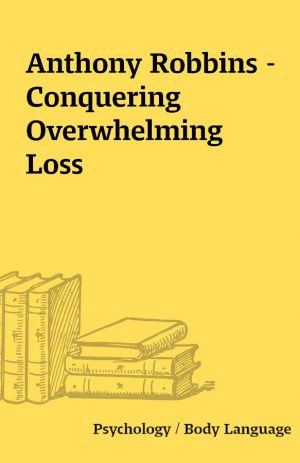Udemy – Emotional Freedom Techniques for Hair Pulling & Skin Picking
Meet.People!
[WebRip – 25 MP4s, eBook – 3 PDFs]
Description
I AM SORRY! THIS THE RIGHT NAME AND DEscriptION OF THE COURSE!ABOUT THE INSTRUCTOR:Joan KaylorLicensed Professional Counselor, MSEd., LPC, DCEP, ACAP-EFTAboutAfter earning her B.A. in sociology and psychology from Muskingum College in Ohio, Joan began working as a real estate property manager. She pulled her hair more than ever and added compulsive checking to her list of OCD traits. She did not hide her pulling from her co-workers but was dismayed to think she was the only one who pulled and that no mental health professional knew how to help her. She had been to a psychiatrist and therapist who were unable to help her. This was before current medications and treatment methods were known.Joan began pulling her hair at age 11 in 6th grade. Her pulled from her scalp for 25 years from age 11 to 36. In 1989, she read the book “The Boy Who Couldn’t Stop Washing” by Judith Rapoport, M.D. Upon reading her book, she discovered “Jackie P.”, a woman who pulled out every hair on her head and face. From her insistence, she would not be turned away by the NIMH study of OCD. From Jackie P’s courage to come forward, herself and millions of “pullers” now know they are not alone with Trichotillomania.Trichotillomania is the inability to resist the urge to pull out hair resulting in noticeable hair loss. The act of pulling comforts, eases emotional pain, and is fun until the pulling episode is over. Then the puller experiences extreme shame, disgust, and anger over mutilating themselves and losing control. ” I have been on both sides of this fence and have dedicated my life to helping people out of this cycle” Kaylor states.From the studies at the National Institute of Mental Health … and because of the work of the Trichotillomania Learning Center and Obsessive-Compulsive Foundation, millions of people now can recognize symptoms of trichotillomania and OCD. WHAT IS TH COURSE ABOUTCourse DescriptionJoan Kaylor stopped pulling out her hair in 1989. She has been helping children, teens and adults stop pulling hair and picking skin since 1994 when she became a professional counselor. Trichotillomania and Dermatillomania are body focused repetitive behaviors. They regulate emotions and help to soothe when we are upset, overwhelmed, bored or stressed. Joan considers pulling and picking to be addictions.The treatment is completely difference from obsessive compulsive disorders. Healing from an addiction is work. It can be done. In this course, Joan will teach you strategies to let go of the urges and counseling for the shame and depression and family stress that come with Trich and picking.Joan Kaylor has treated 1000’s of individuals and families with Trichotillomania and Dermatillomania.There is lots of hope and through EFT (Emotional Freedom Techniques), Joan will take you through a gentle process to relieve your urges to pull your hair or pick at your skin.Trichotillomania and DermatillomaniaTrichotillomania (trick-o-til-o-MAY-nee-ah) is a disorder that causes people to pull out the hair from their scalp, eyelashes, eyebrows, pubic area, underarms, beard, chest, legs or other parts of the body, resulting in noticeable bald patches. Hair pulling varies greatly in its severity, location on the body, and response to treatment. For some people, at some times, Trichotillomania is mild and can be quelled with a bit of extra awareness and concentration. For others, at times the urge may be so strong that it makes thinking of anything else nearly impossible.Skin Picking Disorder (also known as Excoriation Disorder or SPD) is a serious and poorly understood problem. People who suffer from SPD repetitively touch, rub, scratch, pick at, or dig into their skin, often in an attempt to remove small irregularities or perceived imperfections. This behavior may result in skin discoloration or scarring. In more serious cases, severe tissue damage and visible disfigurement can result.Trichotillomania may affect as much as 4% of the population. Women are four times more likely to be affected than men.Symptoms usually begin before age 17. The hair may come out in round patches or across the scalp. The effect is an uneven appearance. The person may pluck other hairy areas, such as the eyebrows, eyelashes, or body hair.These symptoms are usually seen in children:An uneven appearance to the hairBare patches or all around (diffuse) loss of hairBowel blockage (obstruction) if people eat the hair they pull outConstant tugging, pulling, or twisting of hairDenying the hair pullingHair regrowth that feels like stubble in the bare spotsIncreasing sense of tension before the hair pullingOther self-injury behaviorsSense of relief, pleasure, or gratification after the hair pullingMost people with this disorder also have problems with:Feeling sad or depressedAnxietyPoor self imageFor some, Trichotillomania is a lifelong disorder. However, treatment often reduces the hair pulling and the feelings of depression, anxiety, or poor self image.
You must be logged in to post a review.






Reviews
There are no reviews yet.